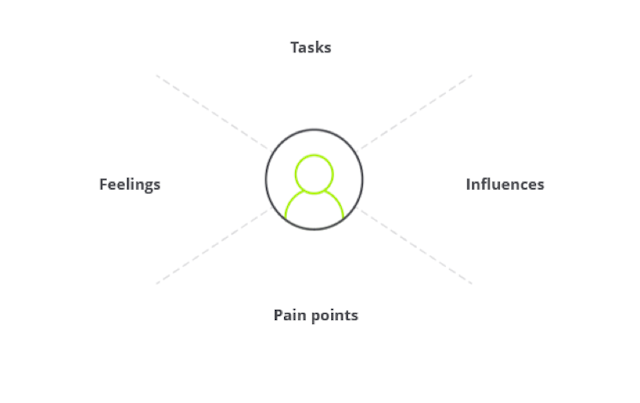What are personas and how can you create them?
What are personas?

Ridgeway assess the popularity of personas and suggest ways for marketers to adopt them as a strategy.
So let’s start with the basics; you may be familiar with personas and use them in some capacity already, but personas are fictional characters, which you create based upon your research in order to represent the different user types that might use your service, product, site, or brand in a similar way. Creating personas will help you to understand your users’ needs, experiences, behaviours and goals.
Essentially, they ensure that the user remains at the forefront of our minds when we are making decisions.
How to build personas?
It’s up to you how far you go with the creation of personas, but these are the basic building blocks to get you started.
Analytics - The analytics of your website can offer you plenty of detail and be a great starting point. You should look at device type, age, visiting times, locations and duration.
Social media - Check out the interests of your followers, listen to your customers and analyse your competitors. Almost every social media site offers analytics to allow you to analyse how people are responding to your content and ads. If your brand is fairly new and you don't have traction on social yet, there are tools that can help. Like SEMRush, which can analyse your competitors and hopefully glean some information about people in your target market.
Involve your team - Gather the thoughts and ideas of your wider team, particularly those that are customer facing.
Ask your customers - Carry out surveys to get direct feedback from your current users.
There is no magic number for how many personas you should create. But generally we would recommend three or four, so that you’ve got something manageable.
Understanding your users
To get insight into what really makes a persona tick, we need to dig into their psyche, as it’s what’s happening on the inside that shapes behaviour on the outside.
We use what’s called ‘empathy mapping’ to see the customer perspective.
Empathy maps can cover a lot of ground, but we always look at:
- Tasks: Relate to what the persona is ultimately trying to get done. This could be them making a purchase, booking a appointment or gathering information.
- Feelings: Unpack their emotional responses; how do you think they will feel when they try to complete this goal. They might feel excited if they are making a purchase, concerned about making the choice and/or frustrated that it is taking longer than anticipated.
- Pain points: Look at where they are struggling. Perhaps the checkout process is clunky and unclear and the user can’t see how much P&P is?
- Influence: Show them how their environment influences their behaviour. Are they trying to complete a goal using a slow network; are they in a hurry; or are they doing it on a smartphone?

Gathering your data
If you know where you can get your data from, and you have an empathy map ready to help flesh out the data, the next step is to ask users directly what their issues are. Demographics and other information is fine, but without knowing their immediate pain points you can’t create relatable content and user journeys that will solve their issues and make their lives easier. And what happens if you make a customer’s life easier? Then they become advocates.
You could put a user survey on your website or your social channels; this is a great way to get in-the-moment engagement.
Alternatively you could start with something more basic and ask your customers some questions through an online questionnaire or over the phone.
The trick is to ask the right questions so that you can build personas quickly. Start by getting a personal description of each respondent, followed by their main tasks on the website (and why they need to do that), to find out if there are any barriers preventing them from completing these tasks.
You want to end up with simple statement answers that can be collated together into personas.
Where should you use personas?
Everywhere! You can use personas to help build and test any of your marketing activities.
Persona creation will help you identify with your audience and focus on solving their problems. After creating your personas, they need to drive your decision making when it comes to content marketing. Just about every aspect of digital marketing can be influenced by your personas and if you get into marketing automation, you can funnel users into your different personas to give them tailored content.
Don’t forget to share your personas with other teams – it’s important that they understand your personas and use them to show empathy when talking with pre-existing and potential customers. You could even pop them up on the wall to keep them at the forefront of people’s minds.
This is just the beginning – keep fleshing out your personas as you learn more.
At Ridgeway, we look to implement personas wherever we can, including in our web builds, content creation and social strategies. They play a huge part in helping us bridge the gap between our clients and their users.
To find out more about how Ridgeway can help you get to know your customers, fill in our contact form or call us on 01993 227 227 to speak to a member of our experience design team.
Jeff Hilton, Content marketing specialist at Ridgeway.
Content by The Drum Network member:

Ridgeway
We work with a diverse portfolio of clients that includes Krispy Kreme, Yo!, De Beers, Twinings, Silver Spoon and hmv, building their brands and audiences through...
Find out more
